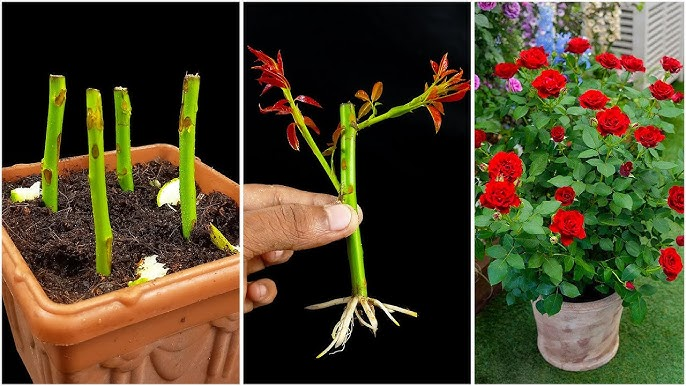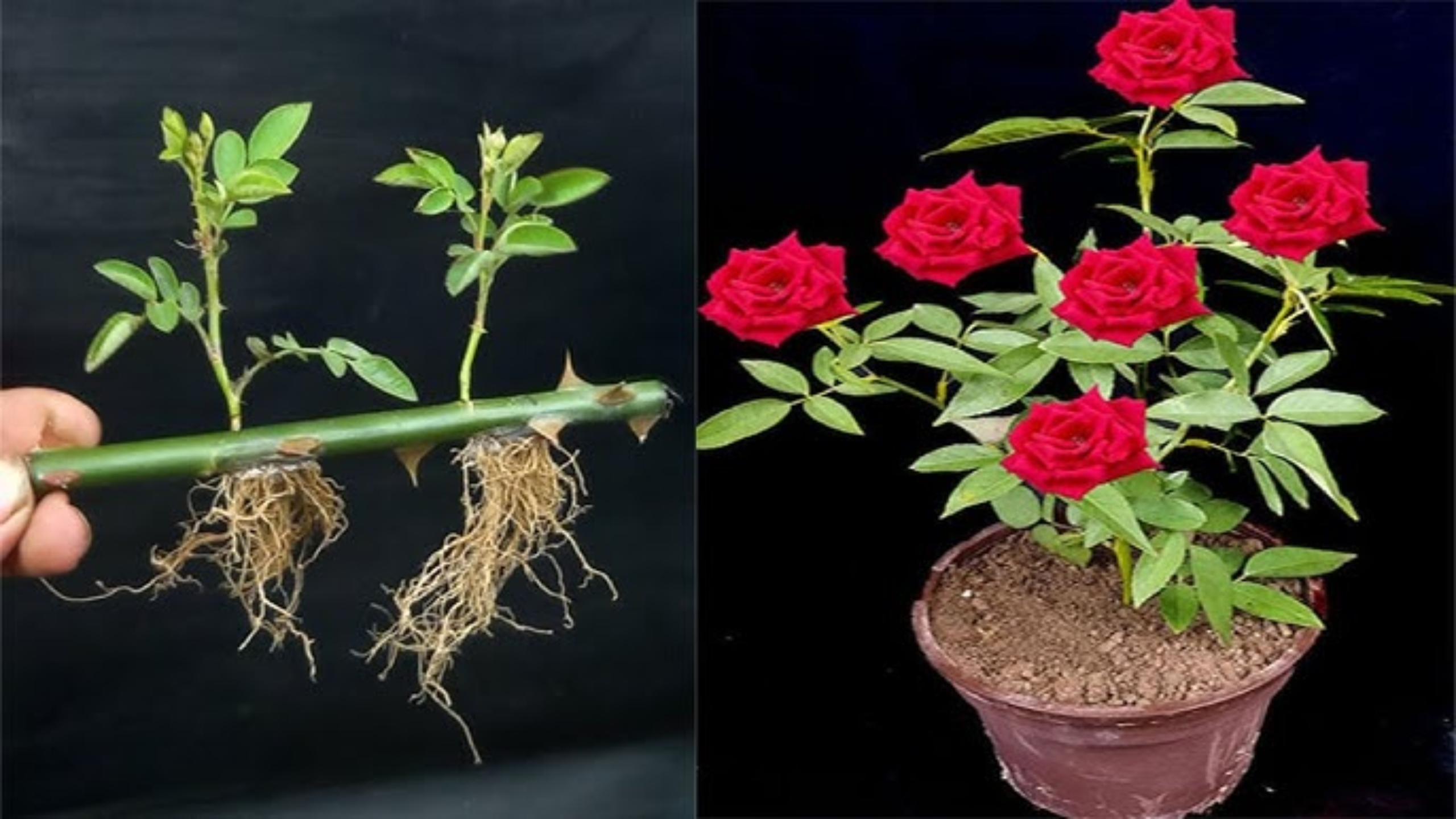Are you dreaming of having beautiful roses gracing your garden? Propagating roses from cuttings is a cost-effective and satisfying way to expand your flower collection. Whether you’re a seasoned gardener or just starting out, this guide will walk you through each step, making it easy to succeed.
What’s the benefit of propagating roses from cuttings?
By taking cuttings, you can create new rose plants that are genetically identical to the parent. It’s also a perfect way to preserve favorite varieties or experiment with new types without purchasing mature plants. Plus, watching a simple stem grow roots and blossom is truly rewarding!
What You Need
Before you begin, gather these materials:
- A healthy, green rose stem (about 6-8 cm long)
- A sharp knife or pruning shears, properly cleaned
- Rooting hormone (optional but can speed up growth)
- A pot filled with well-draining soil or potting mix
- A container with drainage holes
- Transparent plastic bag or cut plastic bottle for creating a mini greenhouse
- Water for watering
Step-by-Step Process
1. Selecting the Perfect Stem
Start by choosing a healthy, recent bloom rose. Look for a flexible, disease-free stem that hasn’t yet hardened.
Tip: The ideal cutting is about 6-8 cm long, with at least 2-3 leaves at the top. Make your cut just below a leaf node (the point where leaves are attached). Remove any flowers or buds—your goal is to focus the plant’s energy on root development.
2. Preparing the Cutting
If you wish, dip the bottom end of the stem in rooting hormone. This promotes faster root growth, though it’s optional.
Note: Using hormone isn’t mandatory, but it can significantly improve your success rate, especially with tougher varieties.
3. Plantting
Fill your pot with damp, well-draining soil. Make a hole with your finger or pencil, then gently insert the cutting halfway into the soil. Firm the soil around it to eliminate air pockets, which helps roots develop uniformly.
4. Creating a Mini Greenhouse
To retain moisture and humidity — crucial for root formation — cover your cutting with a clear plastic bag or a cut plastic bottle placed over the pot. Secure the edges to keep the environment humid.
Tip: Make small holes in the plastic for air circulation, avoiding excessive condensation that might lead to mold.
5. Placement and Care
Place your setup in a bright spot with indirect sunlight. Avoid direct sun exposure, which can scorch the tender cutting.
Water gently whenever the soil feels dry, but ensure it doesn’t become soggy. Consistent moisture encourages healthy root growth without drowning the plant.
6. Waiting for Roots

Within about 3-6 weeks, roots should start to form. You can check by gently tugging on the cutting—a slight resistance indicates successful rooting.
Tip: Patience is key! Not all cuttings root at the same time, so keep nurturing your plant during this period.
7. Transplanting
Once your rose cutting has established roots and shows new leaf growth, it’s time to transplant it into a larger pot or directly into your garden.
Gradually introduce your young plant to more sunlight and outdoor conditions over a week or two to prevent shock.
Tips, Troubleshooting, and Common Questions
Q: Can I root roses from all varieties?
A: Most hybrid and old-fashioned roses root well from cuttings. However, some hybrids may be more challenging, so patience and extra care are recommended.
Q: Why do some cuttings fail?
A: Causes include low humidity, too little light, overwatering, or disease. Carefully following the steps and maintaining optimal conditions improve your chances.
Q: Is it better to use hormone?
A: While not mandatory, rooting hormone can give you a boost, especially for beginners or difficult varieties.
Q: How long does it take for a rose to bloom after rooting?
A: Usually, about one or two years depending on the variety, climate, and care.
Final Thoughts
Propagating roses from cuttings is a fulfilling gardening skill that allows you to multiply your favorite blooms and share them with friends. With patience and care, a simple stem can transform into a vibrant, blossoming rose bush.
Now, roll up your sleeves, gather your materials, and start your own rose-growing adventure!
Happy gardening! Whether you’re expanding your garden or trying your hand at propagation for the first time, remember that every plant begins as a tiny cutting. Your efforts will surely bloom into stunning roses that bring color and fragrance to your home.

